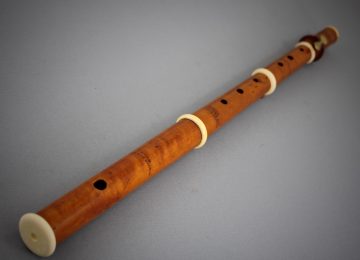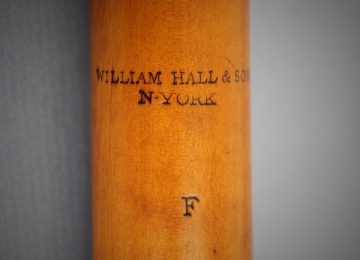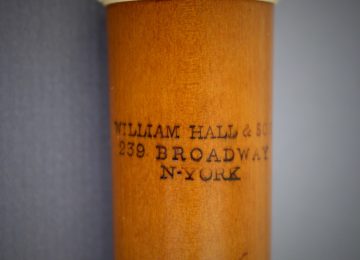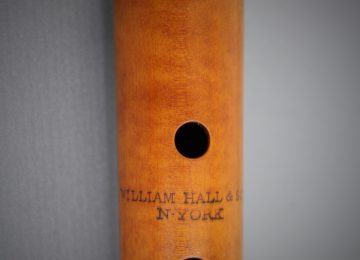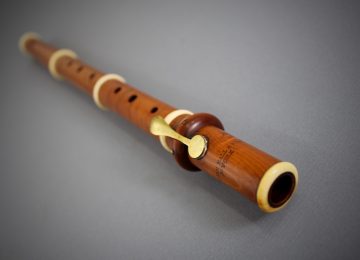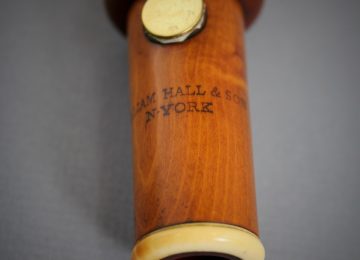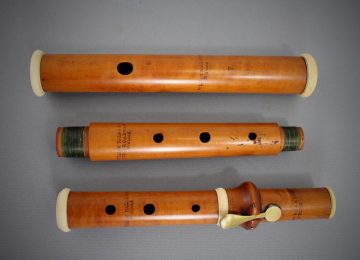Description: This small flute in the key of F is made from boxwood and has a single block-mounted, brass foot key and ivory rings. Its head is unlined. The flute has 1 key – F#. The key seals with a flat leather pad.
Makers marks: The head is marked “WILLIAM HALL & SON / N-YORK / F” . The left hand section of the body is marked “WILLIAM HALL & SON / 239 BROADWAY / N-YORK”. The right hand body and foot sections are both marked “WILLIAM HALL & SON / N-YORK”.
History: William Hall was born in Sparta, NY, in 1796 and died in New York in 1874. He worked as an apprentice for Meacham until 1812, when he joined the militia. After the war he worked with John Firth, for E. Riley, in New York. In 1820 he established independently as a musical instrument maker, and in 1821 partnered with Firth as Firth & Hall, and then from 1831 with Sylvanus Pond as Firth, Hall & Pond. In 1847 he established independently, with his son James F. Hall as William Hall & Son. They made pianos in addition to flutes and other instruments, and in 1855 employed 25 men and 5 boys. In 1875 the company was bought by Ditson. They operated at the 239 Broadway address from 1848 to 1849, so this flute is from that narrow time period. For a detailed history of William Hall and his role in early American flute making, see this excellent article by Wendell Dobbs.
Tuning: This flute plays best in tune at A=435 hz with the head socket/tenon open 3 mm at 70 degrees F. It can be played at A=440 hz with the head socket/tenon closed, but the D (all but the top tone hole open) is sharp.
Specifications: E – F# 218 mm. L2 tone hole 6.9 mm. R2 tone hole 6.8 mm.
Condition: The flute is in good playing condition.

